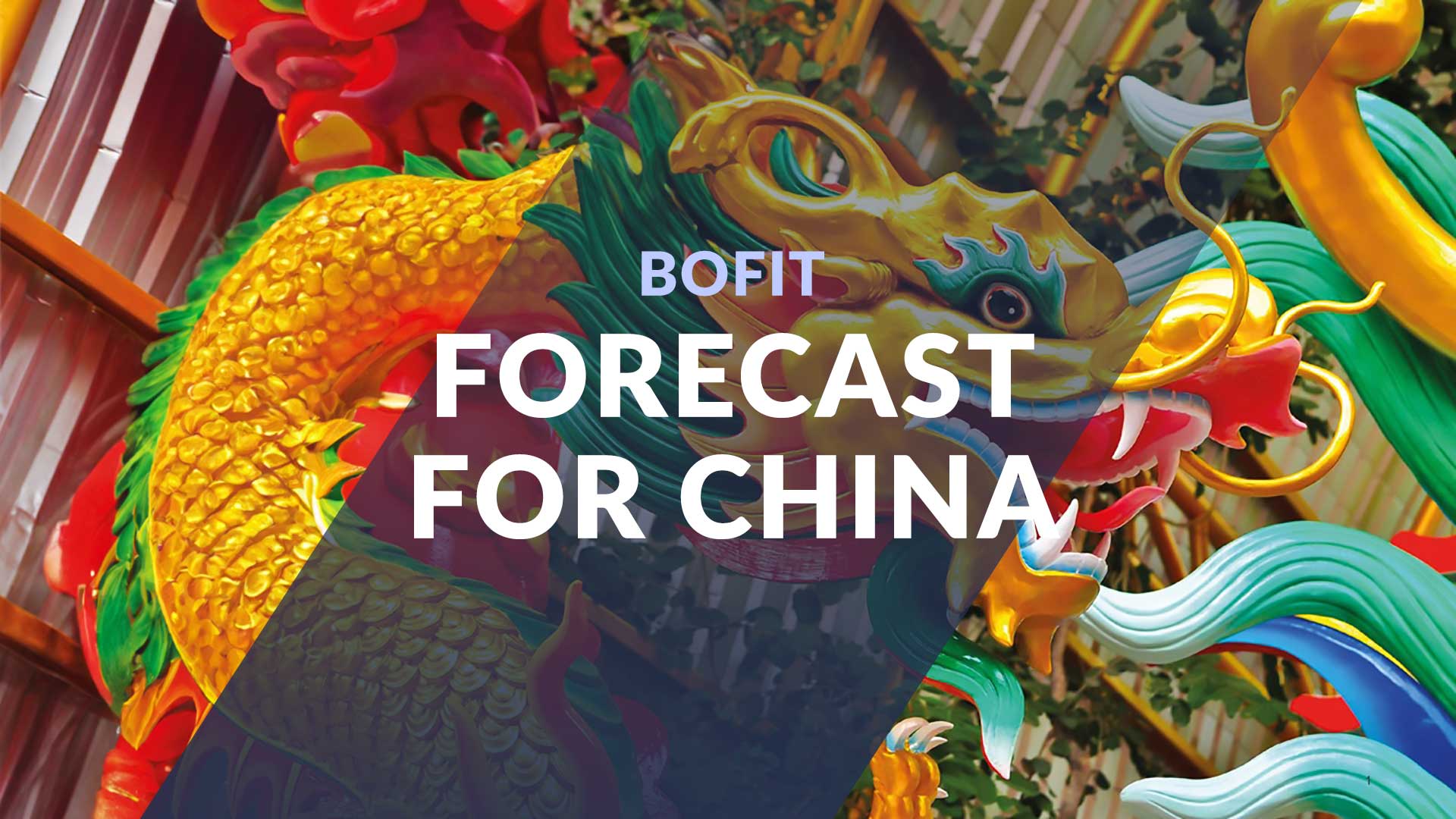China’s economy to slow over the next two years
The Bank of Finland’s Institute for Emerging Economies (BOFIT) reports that China’s economic growth has exceeded expectations in the first half of the year, but the growth been slowing down in months.

We expect the slowdown to continue throughout the forecast period, with growth falling gradually to around 3 % in 2027. Exports will no longer bolster economic growth as earlier, growth in fixed investment will slow, and growth in domestic consumer demand will be insufficient to sustain growth at current levels due to the shrinking, ageing population. Uncertainty has increased with respect to the economic figures reported by China.
Notes BOFIT senior economist Juuso Kaaresvirta, “China’s economic growth this year outperformed our previous forecast, largely due to robust exports in the first half of the year. However, exports support to the GDP growth is waning, the growth of fixed investment is slowing and the is little evidence that domestic consumption is perking up. Structural factors such as China’s shrinking population will keep Chinese economic growth on a slowing trend throughout the entire forecast period.”
Slower growth ahead for Chinese economy
Despite increased trade barriers, Chinese exports performed well in the first half of this year. Growth has begun to slow, however, in recent months. China’s official figures show GDP growing this year by slightly over 5 %, but we believe the actual growth rate is substantially lower. BOFIT’s alternative calculation of Chinese GDP indicates that actual growth this year will be about one percentage point less than the official figure. We expect GDP growth to slow to around 3 % at the end of the forecast period, with growth then settling at that pace over the longer term.
The moderation of growth reflects fading demand for Chinese exports, slowing growth in fixed investment, along with the earlier-mentioned structural factors, including the shrinking working-age population, the slow shift away from a growth paradigm built on fixed capital investment to a consumption-driven model, inefficient resource use, lack of transparency in economic policy and overall weakness in productivity gains. Differences among industries should also remain large throughout the forecast period, with some industries experiencing vibrant growth as others fade.
The Chinese economy has become harder to assess due to the lack of reliable data. Uncertainty surrounding statistical information has increased, even as legitimate discussion of economic issues has become more difficult within China. This situation extends to China’s bureaucrats tasked with drafting Chinese economic policies, as well as the work of economic decision-makers – all while increasing the risk of policy mistakes.
For the entire forecast, please go to https://www.bofit.fi/en/forecasting/latest-forecast-for-china/